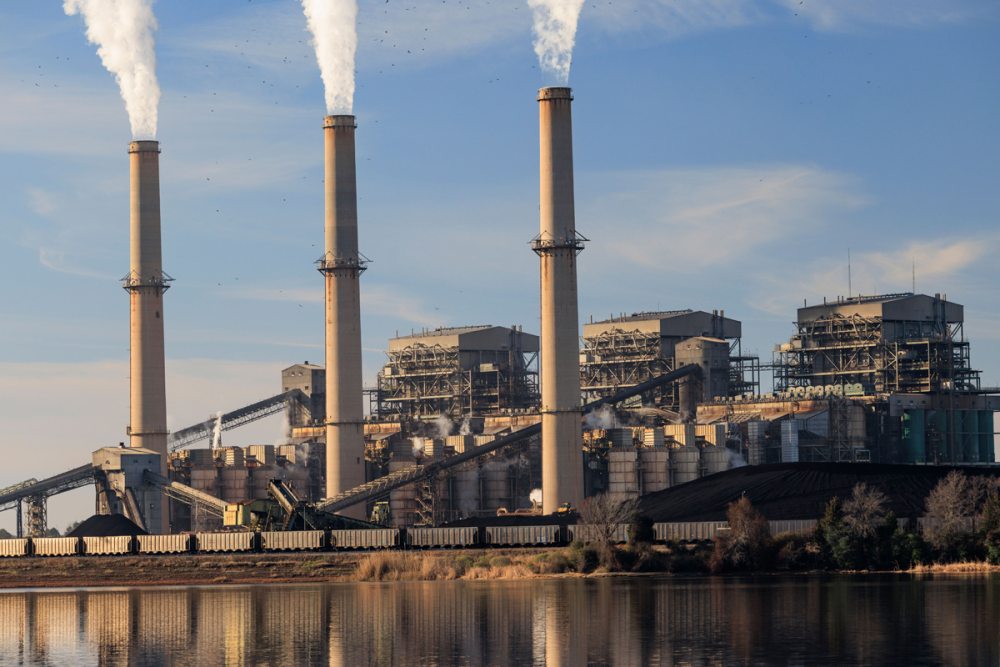
Photo by Al Braden
Though we aren’t declaring a big victory yet, we have made significant progress in our journey to hold fossil fuel company Vistra accountable for its polluting Martin Lake coal plant. On July 7, Sierra Club, represented by Earthjustice and supported by environmental justice advocates and community members from Northeast Texas, presented oral arguments at the 5th Circuit Court of Appeals in New Orleans in defense of EPA's 2016 final sulfur dioxide (SO2) nonattainment designation for the area around Martin Lake. Sierra Club and EPA are fighting to hold Texas accountable to clean up SO2 pollution that is over the legal limit. The state of Texas and Vistra continue to challenge the designation, even though the state’s own monitoring data and the modeling data in the record support it.
The Long Road Here
SO2 pollution can cause breathing problems for people who are exposed to it, even just short-term exposure, and this is especially problematic for kids and people with asthma. It can also create particulate matter that deeply penetrates the lungs and causes health problems and can contribute to acid rain. Sierra Club has been working to address SO2 pollution in Texas for over a decade, from arguing for finalizing the EPA standard itself (long overdue) and then arguing for the EPA to finalize SO2 nonattainment designations for several of Texas’s monster coal plants, including Vistra’s Monticello, Big Brown, and Martin Lake (also long overdue). We’ve since celebrated the retirements of both Monticello and Big Brown (about 3 gigawatts of super-polluting coal), but we still are charging ahead to ensure that Martin Lake stops hurting communities as soon as possible.
Sierra Club’s legal, communications, digital, chapter, and organizing teams have worked to ensure that these fights stayed alive through the Trump administration. So it was a great moment of reflection when we brought even just a few of these folks together to hear the arguments presented at the 5th Circuit.
This experience made clear that judges don’t always fully grasp the issues at play unless advocates like Sierra Club and Earthjustice intervene. No one mentioned Martin Lake’s rank as the worst of the worst – until we did. And the state of Texas and Vistra continue to cling to anything and everything to keep the Martin Lake plant running without controls – a 2.2 GW coal plant and the source of the most mercury and SO2 pollution in the country.
We heard egregious arguments from Vistra’s counsel, all ignoring the reality that this pollution is real – supported by monitoring data – and it hurts people (that’s why EPA created the standard in the first place). Sometimes our legal work, digital and on-the-ground organizing, press outreach, and social media engagement are the best ways to build power and bring real people and real stories to those who make decisions.
Nearly everyone on Sierra Club’s “Team Texas” and beyond has worked on this plant in some capacity.
- Dallas-based organizer Misti O’Quinn introduced new people to our work and ensured that we center community voices in our advocacy efforts.
- Area residents Debra Thomas, Maggie Gardner, and Candace Thomas volunteered their time to learn more about Martin Lake and attended the legal arguments to hold Vistra accountable.
- Our outside counsel, Lisa Perfetto from Earthjustice, took on the oral arguments.
- Our in-house legal team will keep working for clean air, with Josh Smith continuing to lead the legal and regulatory fight on all things Martin Lake for many years now.
What’s Next?
The next steps for addressing this pollution are already underway, as the Texas Commission on Environmental Quality (TCEQ) proposed a state implementation plan (SIP) purporting to address the nonattainment area at issue. That state plan, however, does essentially nothing to reduce harmful SO2 pollution from Martin Lake. The EPA must now review the plan and either approve it or issue a federal plan to address the persistent air quality violations around the power plant, as required by the Clean Air Act. We already know that TCEQ’s plan isn’t protective enough, and we will continue to fight to ensure that EPA rejects it and implements a plan that actually requires pollution reduction and protects the communities near the plant.
Meanwhile, the three judge panel of the 5th Circuit will consider the arguments about the designation itself and return a ruling in the next several months. You can learn more about the case in our press release here.
You can stay tuned to our Twitter, Instagram, and Facebook accounts for updates and calls to action.